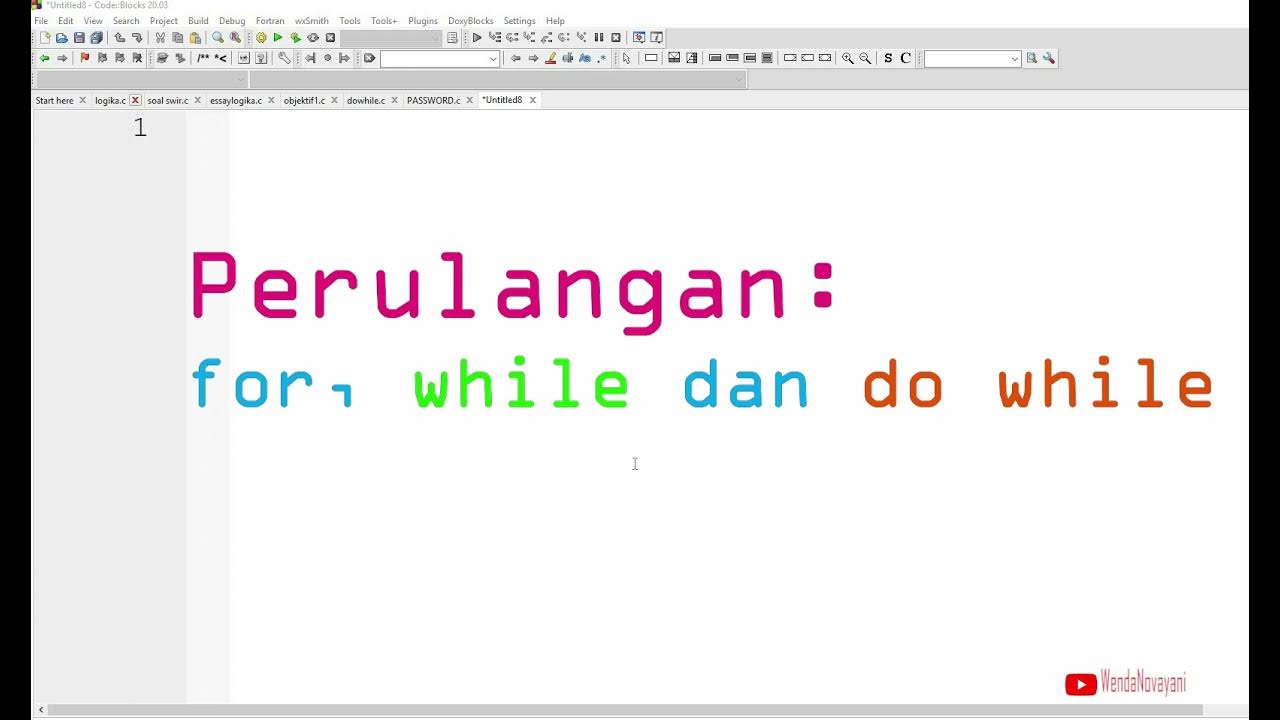While Loop in Python | Python Tutorials for Beginners #lec50
Summary
TLDRThis Python programming tutorial delves into the 'while' loop, contrasting it with the 'for' loop and explaining its use cases. The instructor illustrates the syntax and flowchart of the 'while' loop, demonstrating its practical application with examples like printing numbers and utilizing it with an 'else' block. The video also covers scenarios where 'while' is preferable, such as when the number of iterations is unknown, and introduces the concept of a Sentinel value for loop termination. The tutorial concludes with an assignment to calculate the sum of positive integers until the user enters zero, highlighting the 'while' loop's utility in user-driven iteration.
Takeaways
- 🔁 The script introduces the concept of the 'while' loop in Python, explaining its use for repeating statements until a condition is no longer true.
- 🈚️ Unlike some other programming languages, Python does not have a 'do-while' loop.
- 🔄 The 'while' loop is used when the number of iterations is not known in advance, contrasting with the 'for' loop which is used when the number of iterations is known.
- 📝 The syntax of the 'while' loop involves a condition that is evaluated to either true or false, and statements that are executed as long as the condition is true.
- 🔄 The 'while' loop can be exited using a 'break' statement, and the loop's completion can be indicated by an 'else' block, which executes when the loop is not terminated by a 'break'.
- 🔢 The script provides examples of using 'while' loops to print numbers in a sequence, with explanations of how to increment or decrement the loop variable.
- 🔄 The 'while' loop can be used with lists, where the loop continues until the list is empty, demonstrating the use of the 'pop' method to remove items from a list.
- 📚 The importance of proper loop termination is highlighted to avoid infinite loops, which occur when the condition always evaluates to true without a breaking mechanism.
- 🔑 The concept of a 'Sentinel value' is introduced as a special value used to terminate a loop, especially when the number of iterations is not known in advance.
- 📈 The script differentiates between 'for' and 'while' loops, explaining that 'for' loops are typically used when the number of iterations is predetermined, while 'while' loops are used for more dynamic conditions.
- 📝 An assignment is given to the viewer to calculate the sum of positive integers entered by the user, using a 'while' loop that exits when the user enters zero, demonstrating practical application of the concepts discussed.
Q & A
What is the main difference between a for loop and a while loop in Python?
-A for loop in Python is used when the number of iterations is known in advance, typically used for iterating over a sequence. A while loop, on the other hand, is used when the number of iterations is not known in advance and is determined by a condition that is evaluated before each iteration.
What is the syntax for a while loop in Python?
-The syntax for a while loop in Python is: while condition: # Loop body pass The loop body will execute repeatedly as long as the condition evaluates to True.
How can you create an infinite loop using a while loop in Python?
-An infinite loop can be created by setting a condition that always evaluates to True, such as 'while True:'. To exit the loop, you would need to use a break statement within the loop body or modify the condition to become False.
What is the purpose of the else block in a while loop?
-The else block in a while loop is executed after the loop has completed its iterations normally, that is, not terminated by a break statement. It is useful for executing code when the loop condition becomes False after all iterations have run their course.
Can you provide an example of when to use a while loop instead of a for loop?
-A while loop is suitable when the number of iterations is determined by user input or some condition that is not known in advance. For example, reading lines from a file until the end of the file is reached, or asking the user to input numbers until they decide to quit by entering a sentinel value.
What is a sentinel value in the context of loops?
-A sentinel value is a special value that is used to indicate the end of an input sequence or to terminate a loop. It is a value that does not belong to the set of valid inputs and is used to signal the loop to stop iterating.
How do you exit a while loop in Python?
-You can exit a while loop in Python using the break statement. When the break statement is executed, it immediately terminates the loop, and control passes to the statement immediately after the loop.
What is the significance of the indentation in Python loops?
-In Python, indentation is used to define the body of loops, functions, and other block structures. It is not optional and is a syntactical requirement to indicate the scope of the loop or block.
Can you use a while loop to iterate over a list in Python?
-Yes, you can use a while loop to iterate over a list in Python, but it is more common to use a for loop for this purpose. With a while loop, you would typically use a counter or manage the list's length manually to control the iteration.
What is the role of the 'break' statement within a while loop?
-The 'break' statement within a while loop is used to forcefully exit the loop immediately, regardless of the loop's condition. It is useful for terminating the loop when a certain condition is met that requires an immediate stop.
Outlines

This section is available to paid users only. Please upgrade to access this part.
Upgrade NowMindmap

This section is available to paid users only. Please upgrade to access this part.
Upgrade NowKeywords

This section is available to paid users only. Please upgrade to access this part.
Upgrade NowHighlights

This section is available to paid users only. Please upgrade to access this part.
Upgrade NowTranscripts

This section is available to paid users only. Please upgrade to access this part.
Upgrade Now5.0 / 5 (0 votes)





